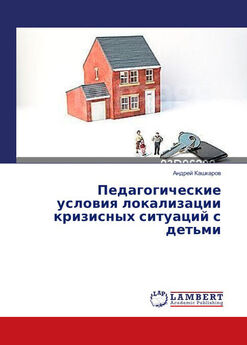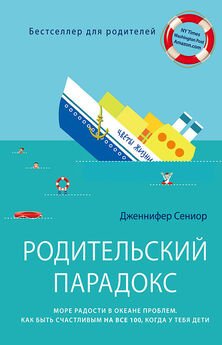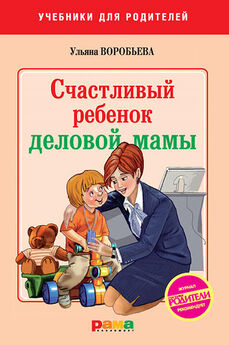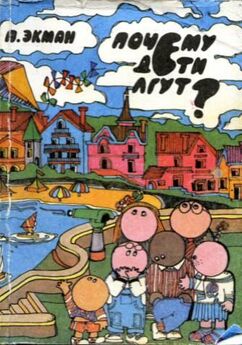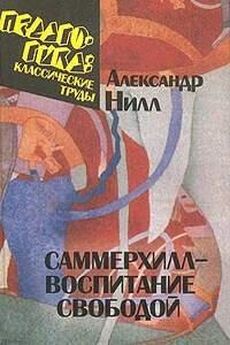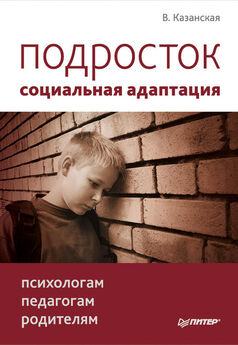Игорь Кон - Бить или не бить?
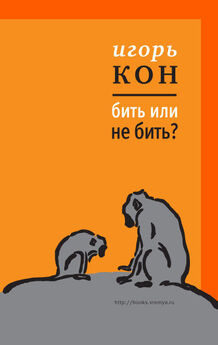
- Название:Бить или не бить?
- Автор:
- Жанр:
- Издательство:неизвестно
- Год:неизвестен
- ISBN:нет данных
- Рейтинг:
- Избранное:Добавить в избранное
-
Ваша оценка:
Игорь Кон - Бить или не бить? краткое содержание
«Бить или не бить?» – последняя книга выдающегося российского ученого-обществоведа Игоря Семеновича Кона, написанная им незадолго до смерти весной 2011 года. В этой книге, опираясь на многочисленные мировые и отечественные антропологические, социологические, исторические, психолого-педагогические, сексологические и иные научные исследования, автор попытался представить общую картину телесных наказаний детей как социокультурного явления. Каков их социальный и педагогический смысл, насколько они эффективны и почему вдруг эти почтенные тысячелетние практики вышли из моды? Или только кажется, что вышли? Задача этой книги, как сформулировал ее сам И. С. Кон, – помочь читателям, прежде всего педагогам и родителям, осмысленно, а не догматически сформировать собственную жизненную позицию по этим непростым вопросам.
Бить или не бить? - читать онлайн бесплатно ознакомительный отрывок
Шрифт:
Интервал:
Закладка:
Corporal punishment in Japan: gobsmacking = results // http:// whatjapanthinks.com/2008/07/03/corporal-punishment-in-japan-gobsmacking-results//.
Crandall M. Chiu B., Sheehan K. Injury in the First Year of Life: Risk Factors and Solutions for High-Risk Families // Journal of Surgical Res. 2006. Vol. 133. Issue 1. P. 7—10.
Cross P. A., Matheson K. Understanding sadomasochism: an empirical examination of four perspectives // T he Journal of Homosexuality. 2006. Vol. 50. № 2–3. P. 133–166.Dayton J. J. D. Corporal punishment in public schools: The legal and political battle continues // Education Law Reporter. 1994. Vol. 89. P. 729–740.
Deater-Deckard K., Dodge K. A. Externalizing behavior problems and discipline revisited: Nonlinear effects and variation by culture, context, and gender // Psychological Inquiry. 1997. Vol. 8. № 3. P. 161–175.
Deater-Deckard K., Dodge K. A., Bates J. E., Pettit G. S. Physical discipline among African American and European American mothers: Links to children’s externalizing behaviors // Developmental Psychology. 1996. Vol. 32. № 6. P. 1065–1072.
Deater-Deckard K., Lansford J. E., Dodge K. A., Pettit G. S., Bates J. E. The development of attitudes about physical punishment: an 8-year longitudinal study // J. Fam. Psychol. 2003. Vol. 17. P. 351–360.
De Zoysa P., Newcombe P. A., Rajapakse L. Corporal punishment in the Sri Lankan context: Psychological outcomes for our children // D. M. Devore (Ed.). New Developments in Parent-Child Relations Hauppauge. NY: Nova Science, 2006. P. 1—40.
Discipline and Punishment of Children: A Rights-Based Review of Laws, Attitudes and Practices in East Asia and the Pacific. Bangkok: Save the Children Sweden. Disgraceful Affair at Hounslow // http://www.stmgrts.org.uk/archives/2010/01/the_disgraceful_affair_at_hounslow.html.
Dixon W. E. 20 studies that shook up child psychology// Developments: Newsletter of the Society For Research On Child Development. 2003. Vol. 46. № 1.
Douglas E. M. Familial violence socialization in childhood and later life approval of corporal punishment: A cross-cultural perspective // American Journal of Orthopsychiatry. 2006. Vol. 76. № 1. P. 23–30.
Drey N., Pastoetter J., Pryce A. Sex-Study 2008 – Sexual Behaviour in Germany. DGSS and City University London in Collaboration with ProSieben. Duesseldorf – London, 2008.
Dugan C. The Origins of Spanking Fetish // http://nospank.net/dugan5.htm. 1996.
Durr ant J. E. Law reform and corporal punishment in Sweden: Response to Robert Larzelere, The Christian Institute, and Families First. Winnepeg, Canada: Department of Family Social Sciences. University of Manitoba, 2005.
Durrant J. E., Janson S. Law reform, corporal punishment and child abuse: The case of Sweden // International Review of Victimology. 2005. Vol. 12. P. 139–158.
Durrant J. E., Rose-Krasnor L., BrobergA. G. Physical punishment and maternal beliefs in Sweden and Canada // Journal of Comparative Family Studies. 2003. Vol. 34. P. 586–604.
Durrant J. et al. Punitive Violence Against Children in Canada // 41E CECW Information Sheet 1. 2006.
Dussich J. P. J., Maekoya Chie. Physical child harm and bullying-related behaviors: A comparative Study in Japan, South Africa, and the United States // International Journal of Offender Therapy and Comparative Criminology. 2007. Vol. 51. № 5. P. 495–509.
Ember C. R., Ember M. War, socialization, and interpersonal violence: A cross-cultural study // Journal of Conflict Resolution. 1994. Vol. 38. P. 620–646.
Ember C. R., Ember M. Explaining corporal punishment of children: A cross-cultural study // American Anthropologist. 2005. Vol. 107. № 4. P. 609–619.
Erlanger H. S. Social class and corporal punishment in child-rearing: A reassessment //American Sociological Review. 1974. Vol. 39. № 1. P. 68–85.Farrington D. P. Conduct disorder, aggression, and delinquency // Handbook of Adolescent Psychology. Second ed. / Ed. By R. M. Lerner, L. Steinberg. N.Y.: Willey, 2004. P. 626–664.
Federal Ministry of Justice & Federal Ministry for Family Affairs, Senior Citizens, Women and Youth. Violence in upbringing: An assessment after the introduction of the right to a non-violent upbringing. 2003.
Fedoroff J. P. Paraphilic Worlds // Handbook of Clinical Sexuality for Mental Health Professionals / S. Levine (Ed). New York: Routledge, 2010. Chapter 23. P. 401–424.
Fraser N. The Importance of Being Eton: Inside the World\'s Most Powerful School. London: Short Books, 2006.
Fukuzawa R. E., Le Tendre G. Intense Years: How Japanese Adolescents Balance School, Family and Friends. New York, London: Routledge Falme, 2001.
Fuller J. M. The science and statistics behind spanking suggest that laws allowing corporal punishment are in the best interests of the child //Akron Law Review. 2009. Vol. 42. No. 243.Gathorne-Hardy J. The Public School Phenomenon, 597—1977. L.: Hodder and Stoughton, 1977.
Gershoff E. T. Corporal punishment by parents and associated child behaviors and experiences: A meta-analytic and theoretical review // Psychological Bulletin. 2002. Vol. 128. P. 539–579.
Gershoff E. T. More harm than good: A summary of scientific research on the intended and unintended effects of corporal punishment on children // Law and Contemporary Problems. 2010. Vol. 73. P. 33–58.
Gershoff E. T., Grogart-Kaylor A., Lansford J. E., Chang L. et al. Parent discipline practices in an international sample: Associations with child behaviors and moderation by perceived normativeness // Child Development. 2010. Vol. 81. Issue 2. P. 487–502.
Gibson I. The English vice. Beating, sex and shame in Victorian England and after. Duckworth, 1978.
Global Initiative to End All Corporal Punishment of Children // http://www.endcorporalpunishment.org.
Goldfrank E. Socialization, Personality, and the Structure of Pueblo Society//American Anthropologist. 1945. Vol. 47. P. 516–539.
Goldman J. D. G., Goldman R. J. Children’s Perceptions of Parents and their Roles: A Cross National Study in Australia, England, North America and Sweden // Sex Roles. 1983. Vol. 9. P. 791–812.
Goodman R. Children of the Japanese State: The Changing Role of Child Protection. Oxford University Press, 2000.
Goodman R. Family and Social Policy in Japan: Anthropological Approaches, Cambridge University Press: Cambridge, 2002.
Grogan-Kaylor A. Corporal punishment and the growth trajectory of children’s antisocial behavior // Child Maltreat. 2005. Vol. 10. № 3. P. 283–292.Hendry J. Understanding Japanese Society. 3 ed. London: Routledge, 2003.
Holden G. W. Perspectives on the effects of corporal punishment: Comment on Hollowell C. Enforcing performance: Disciplining girls in British co-educational boarding school stories, 1928—58 // International Research in Children\'s Literature. 2008. Vol. 1. P. 125–138.
Hollowell С. Enforcing performance: Disciplining girls in British coeducational boarding school stories, 1928—58 // International Research in Children’s Literature. 2008. Vol. 1. P. 125–138.
How They Were Taught / P. H. J. H. Gosden (ed.). Oxford: Basil Blackwell, 1969.Hunt D. Parents and Children in History // Psychology of Family Life in Early Modern France. N.Y.: Basic Books, 1970.
International comparative research on «home education»: survey on children and the family life. Tokyo, Japan Association for Women\'s Education, 1995.
International Save the Children Alliance on corporal punishment. April 2003.
Ishii-Kuntz М. K., Kato K., Tsuchiya M. Japanese fathers of preschoolers and their involvement in child care // Journal of Marriage and Family. 2004. Vol. 66. P. 779–791.Japanese fathers become \'Papa Danshi\' // CNNGo.com http://www.cnngo.com/tokyo/none/papa-danshi-japanese-fathers-who-being-fathers-289399#ixzz01nwXZBcR. James A., Jencks C., Prout A. Theorizing Childhood. L.: Polity press, 1999.
Kacker L., Varadan S., Kumar P. Study on Child Abuse: India 2007. New Dehli: Ministry of Women and Child Development, 2007.
Kelly C. Children’s World. Growing Up in Russia, 1890–1991. New Haven-L.: Yale UP, 2007.
Kessler R.C., McLaughlin K. A. et al. Childhood adversities and adult psychopathology in the WHO World Mental Health Surveys // The British Journal of Psychiatry. 2010. Vol. 197. P. 378–385.
King N., Butt Т., Green L. Spanking and the corporal punishment of children: the sexual story // International Journal of Children\'s Rights. 2003. Vol. 11. № 2. P. 199–217.
Kobayashi NTanimura М., Shimauchi Y. Corporal punishment in the schools and homes of Japan, 9th Asian Congress of Pediatrics, Hong Kong, 22–23 March 1997 (http://www.childresearch.net/RESOURCE/PRESEN/1997/KORNER/CORPO.HTM).
Kobayashi-Winata H., Power T. G. Child rearing and compliance: Japanese and American families in Houston // Journal of Cross-Cultural Psychology. 1989. Vol. 20. № 4. P. 333–356.
Krueger R. B. The DSM diagnostic criteria for sexual sadism //Archives of Sexual Behavior. 2010. Vol. 39. P. 325–345, 346–356.Lansford J. E. The special problem of cultural differences in effects of corporal punishment // Law and Contemporary Problems. 2010. Vol. 73. P. 89—106.
Lansford J. E, Chang L., Dodge K. A., Malone P. S. et al. Cultural normativeness as a moderator of the link between physical discipline and children\'s adjustment: A comparison of China, India, Italy, Kenya, Philippines, and Thailand // Child Development. 2005. Vol. 76. P. 1234–1246.
Lansford J. E., Criss М. М., Dodge K. A. et al Trajectories of physical discipline: early childhood antecedents and developmental outcomes // Child Dev. 2009. Vol. 80. № 5. P. 1385–1402.
Lansford J. E., Deater-Deckard K., Dodge K. A., Bates J. E., Petit G. S. Ethnic differences in the link between physical discipline and later adolescent externalizing behaviors // Journal of Child Psychology and Psychiatry. 2004. Vol. 45. P. 801–812.
Lansford J. E., Dodge K. A. Cultural norms for adult corporal punishment of children and societal rates of endorsement and use of violence corporal punishment and societal violence // Parenting: Science and Practice. 2008. Vol. 8. № 3. P. 1—24.
Larzelere R. E. Child outcomes of nonabusive and customary physical punishment by parents: An updated literature review // Clinical Child and Family Psychology Review. 2000. Vol. 3. № 4. P. 199–221.
Larzelere R. E., Baumrind D. Are spanking injunctions scientifically supported? // Law and Contemporary Problems. 2010. Vol. 73. P. 57–88.
Larzelere R. E., Cox R. B. Jr., Smith G. L. Do nonphysical punishments reduce antisocial behavior more than spanking? A comparison using the strongest previous causal evidence against spanking // BMC Pediatrics. 2010. 10:10 (http://www.biomedcentral.com/1471-2431/10/10).
Larzelere R. E., Kuhn B. R. Comparing child outcomes of physical punishment and alternative disciplinary tactics: a meta-analysis // Clinical Child and Family Psychology Review. 2005. Vol. 8. № 1. P. 1—37.
Lau J. Т., Kim J. H., TsuiH. Y., Cheung A., LauMYu A. The relationship between physical maltreatment and substance use among adolescents: a survey of 95,788 adolescents in Hong Kong // Journal of Adolescent Health. 2005. Vol. 37. P. 110–119.
Шрифт:
Интервал:
Закладка:
